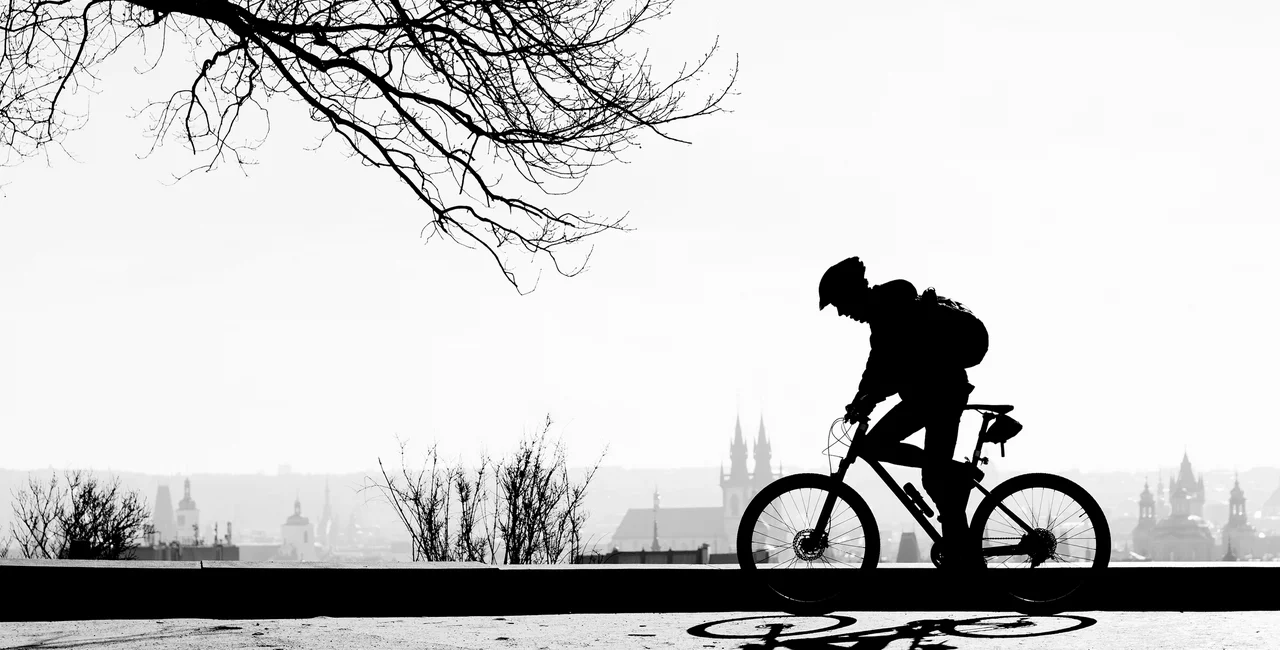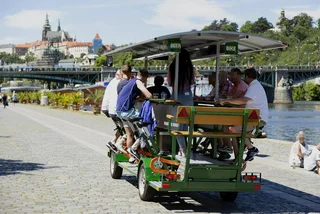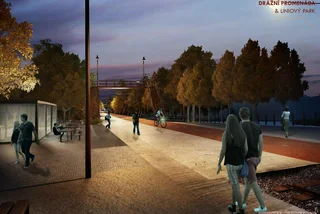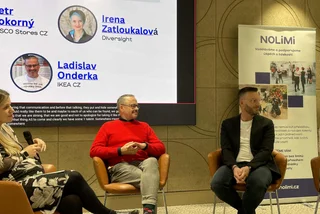The Prague cycling season for 2021 has started, and City Hall is planning record investments in cycling infrastructure with CZK 370 million invested in 21 kilometers of new trails, design work, and studies of further development. There has been a 38 percent increase in bicycle use during the Covid pandemic, and the city hopes to make cycling safer and more attractive in the future.
The Technical Road Administration (TSK) budget has CZK 122 million reserved for cycling infrastructure for this year for seven kilometers of new cycle paths. In addition, CZK 247 million in subsidies for 31 projects were approved by city districts. During 2021, some 17 projects should be completed, creating almost 14 kilometers of new trails. Subsidies will also be used for studies and design work for eight kilometers of new trails that will be built in 2022.
Investment has been increasing. If the planned HolKa footbridge linking Prague 7 and Prague 8 is included in the total, this year investment will rise over half a billion crowns, Prague Deputy Mayor Adam Scheinherr, responsible for transport, said.
“Last year is it was CZK 170 million, and if we count the Troja footbridge for pedestrians and cyclists, it was CZK 300 million. The year before, it was CZK 121 million and before our arrival only CZK 17 million,” Scheinherr said.
He added that the importance of hundreds of millions of crowns in investments is underlined by the change in traffic behavior of Praguers over the last year.
“During the pandemic, people have been ride their bikes more than we think,” Scheinherr said.
“In 2020, in connection with the Covid-19 pandemic, automatic cyclist counters installed in 22 locations in Prague recorded a year-on-year increase of 1.23 million more cyclists, an increase of 38 percent compared to the previous year,” Scheinherr said.
The daily highs on the busiest counters increased from 4,000 to 6,000 passes per day. Up to 80,000 cycling newcomers were added, making a total of 340,000 people cycled around Prague last year. The increase concerns both weekends and weekdays.
“If Praguers want to ride a bike, it is important to support them. This improves the air in Prague and frees up space in public transport and on the roads,” he added.
Prague has two types of cyclists with different demands on the traffic environment. “From Monday to Friday, traffic cyclists predominate, and we increase their safety by taking traffic measures on the streets. On weekends, they are replaced by recreational cyclists, for whom we build protected cycle paths. And that is the essence of caring for the development of safe cycling in cities. Even in Prague,” city cycling coordinator Pavel Polák said.
TSK spokeswoman Barbora Lišková said one of the major projects in 2021 will be the long-awaited construction of the second stage of the Zbraslav – Jarov cycle path, which connects the first and third stages that were completed several years ago.
“We started construction at the end of March and will end in May this year. The completion of this part was hindered by property disputes. Cyclists thus had to use about half a kilometer of field road at the junction of these stages, which was difficult on rainy days,” she said.
Cyclists will also be able to ride on new routes, for example in Kunratice, where an almost 300-meter-long section will connect to the A202 cycle route from Vestec. Another new section will be built from the Kačerov metro station to the U Labutě tram stop. Cycle paths will also be connected around a housing project in Černý Most.

There will be technical improvements to the A2 cycle path along the Vltava where it crosses the Ohrobecký stream and a barrier-free connection on the streets under the Mánes Bridge. The Satalice – Vinoř and Staroklánovická (Old Klánovice) cycle paths are also waiting for repairs and extensions. Work on other routes is nearing completion after a winter construction break, including some projects in the Radotín area.
“With all our investments, we want to increase the safety and comfort of not only cyclists, but also of other road users,” Scheinherr said.
“The new cycling infrastructure will connect the existing trails for easy crossings between them and we will continue to expand the network to give cyclists as much space as possible and a comfortable ride separate from cars and public transport,” Scheinherr added.
Prague is also supporting cycling by expanding the number of bicycle stands on its territory. In July 2020, all city districts were informed about the possibility of financing the installation of stands. More than 211 inverted "U" type bicycle stands were successfully completed, for example in Prague 3, Prague 5, Prague 6, Prague 11 and Přední Kopanina. Bicycle shelters were also built in Kbely, Horní Počernice and Prague 13, among other places.
“We know from surveys among cyclists that they often lack a place to lock their bike and the possibility of a comfortable transfer between the bike and public transport. That is why we are continuously adding hundreds of stands to the streets. … At the moment, they are also at the entrances to the 33 metro stations, and by summer they will be at all,” Scheinherr said.
“Based on the most common cycling routes and the recommendations of Praguers, we also placed several bicycle repair stops in the street, where people can easily adjust a derailleur, repair the cable brakes, inflate and inner tube and tighten various bolts and nuts,” Scheinherr added.
The city is also addressing individual Prague schools and city districts with an offer of the possibility of building a bicycle shelter and bicycle stands. At the same time, this year Prague is offering city districts the possibility of installing publicly accessible bicycle stands in locations of their choice.
The city also supports cyclists through the app Na kole Prahou (Prague by bike). It serves primarily to increase the safety of bicycle transport and its promotion as one of the long-term sustainable modes of transport. In 2021, the application will be expanded with functions for users of e-bikes, electric scooters, and classic scooters.












 Reading time: 4 minutes
Reading time: 4 minutes 




























